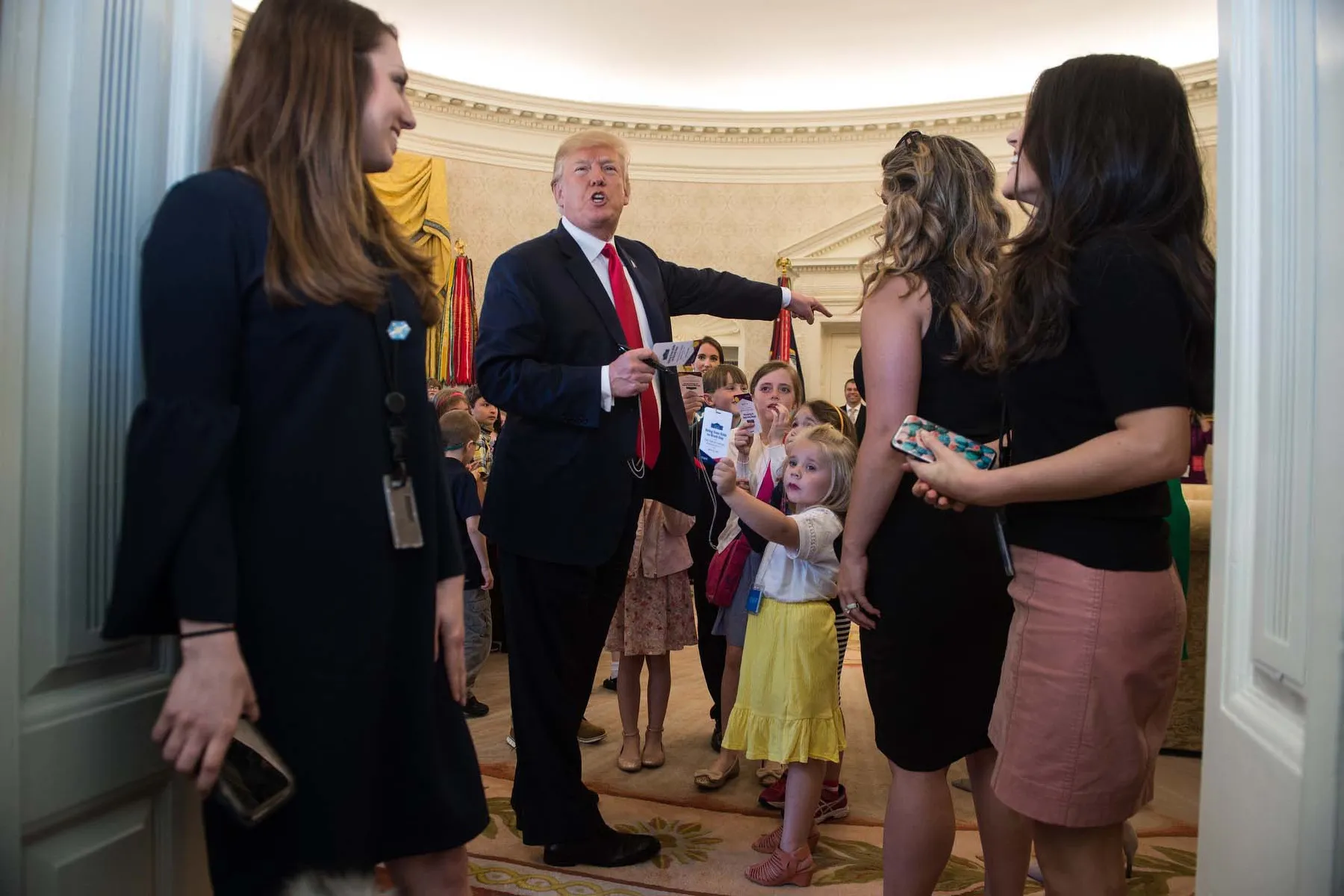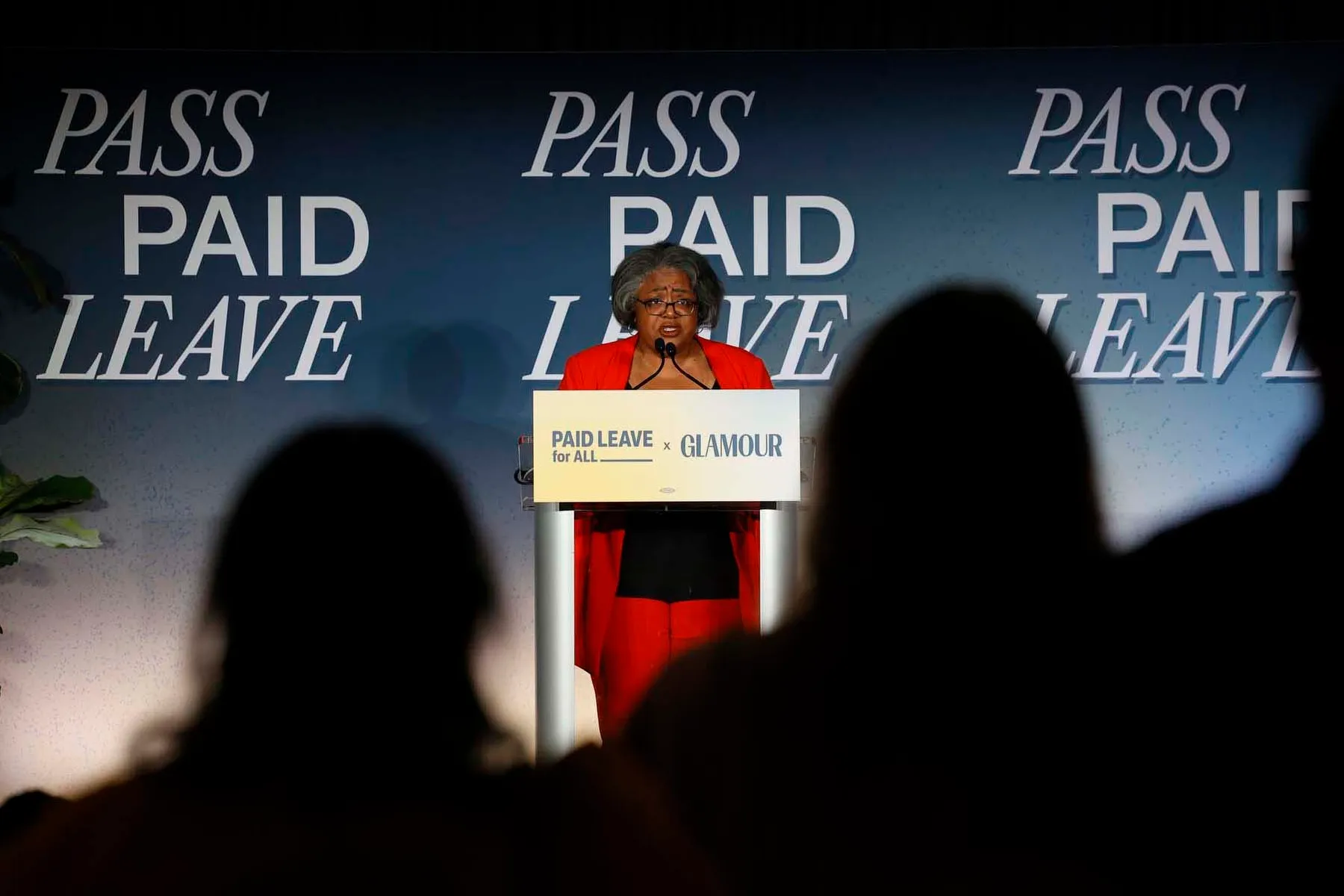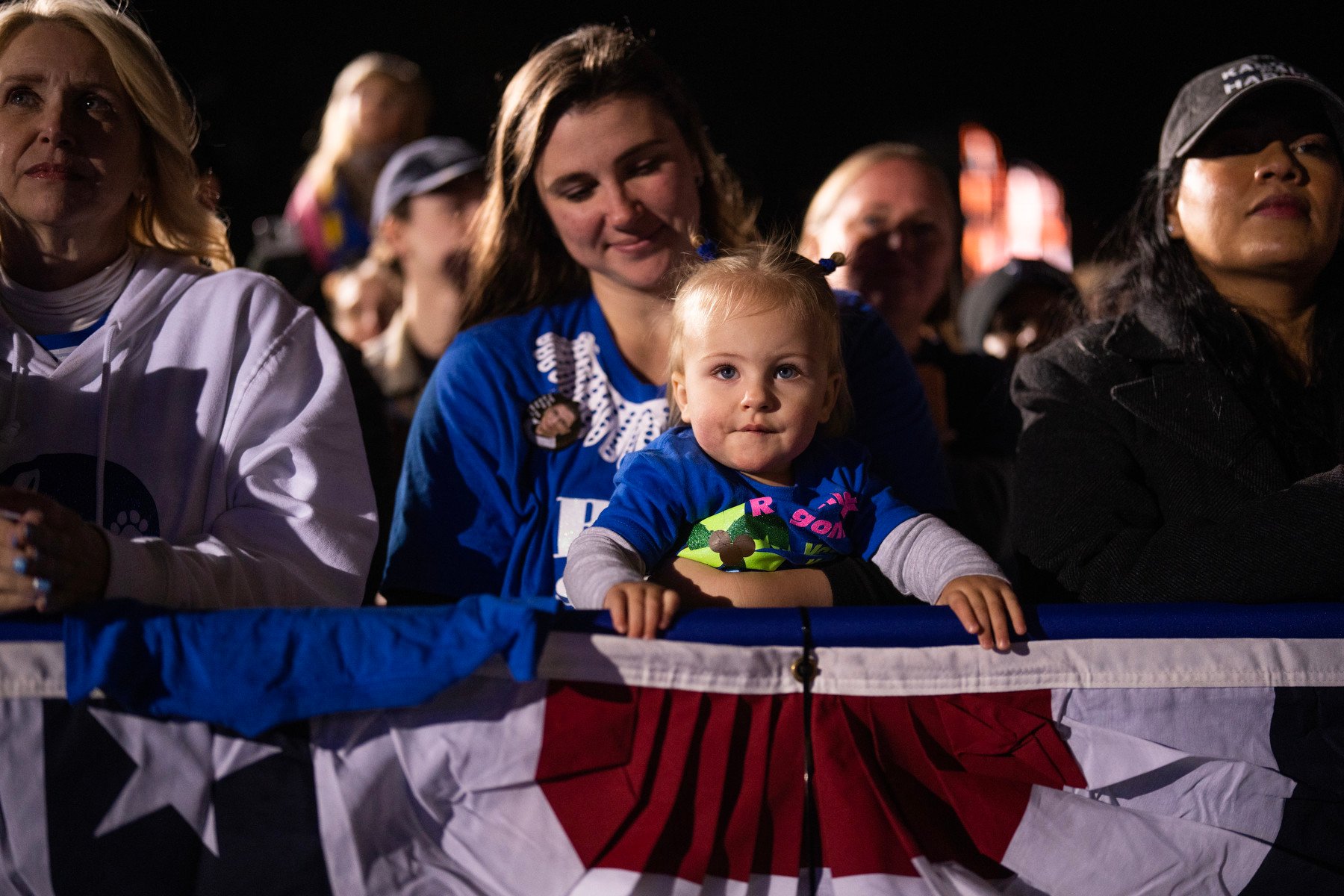We’re going to get you through this election. Sign up for our daily newsletter.
In this election, presidential campaigns are offering proposals on home care and the child tax credit, speaking to parents and caregivers more directly than ever before. But there is one policy proposal that has been conspicuously absent: What would Kamala Harris or Donald Trump do about paid medical and family leave?
Though Harris has mentioned the issue throughout her campaign and Trump previously supported a version as president, neither candidate has put forth a specific policy proposal this cycle despite paid leave’s immense bipartisan popularity with voters. The United States is the only industrialized nation that doesn’t provide its workers at least some paid time off to manage an illness or for the birth of a child. Less than a third of workers have paid family leave through their employers, and only about half can access unpaid leave through the existing federal program, known as the Family and Medical Leave Act, or FMLA.
According to a poll by Democratic polling firm Lake Research Partners in November 2023, about 96 percent of Democrats, 82 percent of independents and 76 percent of Republicans in battleground states supported a paid leave policy. New polling out this week shows that support for paid leave has only increased. Some 91 percent of swing-state voters support a paid leave policy, according to a Global Strategy Group poll of 1,005 voters in Arizona, Georgia, Michigan, Nevada, Pennsylvania and Wisconsin.
With a week left until the election, what do we know about the candidates’ stances on paid leave?
Both candidates have talked about paid leave in the past. This election cycle, there has been a stark contrast between how Harris and Trump have discussed the subject.
Harris has been a longtime champion of a robust federal paid leave policy. When she last ran for president in 2019, she floated a six-month guaranteed paid leave plan — the most ambitious of any Democratic presidential candidate.

Harris has talked about paid leave repeatedly since she launched her campaign in July, expressing in her first campaign speech that she envisioned an America where “every person has access to paid family leave,” but she has not gone as far as to propose a specific structure as she did in the past. Her running mate, Minnesota Gov. Tim Walz, signed one of the most substantial state-level paid leave policies in the country, guaranteeing 12 weeks of leave at 90 percent of workers’ pay to care for a newborn or sick family member, plus an additional 12 weeks off to recover from serious illness, but he failed to mention that when asked about paid leave at the vice presidential debate. If Democrats win control of the White House, the House of Representatives and the Senate — which is unlikely to happen — Walz has said passing paid leave would top his list as a day one priority for a Harris-Walz administration.
During the Trump administration, the former president was the first Republican to call for paid leave during his State of the Union address, and he supported a policy that would allow parents to get an advance of up to $5,000 in child tax credits to use toward leave, which would ultimately cut the size of their future credits. During his term, Trump also signed a defense bill that included 12 weeks of paid parental leave for the country’s 2 million federal employees. The issue was a priority for his daughter and adviser, Ivanka Trump, who held a bipartisan paid leave and child care summit at the White House in December 2019, noting that it’s hard to expect employers to offer the benefit if the federal government is unwilling to provide it. “You have to lead by example,” she said then.
But Ivanka Trump is not expected to play any role in a second Trump term. This election cycle, the former president has hardly mentioned the subject at all.
“I’ve been, frankly, very surprised,” that Trump hasn’t discussed it more, said Vicki Shabo, a senior fellow for gender equity, paid leave and care policy and strategy at liberal think tank New America’s Better Life Lab. “It’s interesting they are not talking about it when we know paid leave is as or more popular as other issues that are being discussed. There’s a huge missed opportunity on both sides, frankly, to not be leaning into this issue more.”
The silence from the Trump campaign could have opened the door for Harris to put forward a bold strategy, as she has in the past, but that hasn’t happened either. Paid leave advocates said Harris’ repeated mentions of her support for paid leave may be enough in a truncated, 100-day campaign where the more important thing is to show it’s a priority.
“Specifics are always wonderful, but I do think there is enough information for voters to grasp,” the contrast, said Melissa Boteach, the vice president of child care/early learning and income security at the National Women’s Law Center Action Fund.
Still, every bit of messaging in a tight race will be important.
When the Harris campaign has put out specific plans, it has been on policies that will reduce direct costs for families, such as a federal ban on price gouging for food and groceries and proposals around expanding the child tax credit. After four years of record inflation, it’s clear that’s where voters are laser-focused. The economy and inflation rank highest for most voters, especially women.
Paid leave would help caregivers and workers, but it’s not a direct cost savings policy. Many Americans also misunderstand how leave works, viewing it as just a business benefit that they may not expect to hear about from politicians. Because of that, it makes it a harder choice to prioritize talking about or expanding on plans.
“I think to some extent, in [the Harris campaign’s] minds, they just need to win, and they could do that through any number of paths, some of which are a little more understandable and intuitive to people” than paid leave, Shabo said, adding that while she wished the Harris campaign would “talk more about a vision of a country in which everyone has access to paid leave and be clear about how they could get there,” it could take some time to craft something that would have a chance to pass.
More than a dozen states already have paid leave policies, and most of them work as a kind of insurance. Typically, the worker and the employer pay into the system, which benefits all employers, but especially small businesses that don’t have the capital to cover the expense entirely. A federal program would likely take a similar shape, and there are multiple ideas on how to do it, including the Family and Medical Insurance Leave Act, which has been reintroduced every year since 2013.
Still, putting forward a concrete plan now could make it harder to have a bipartisan discussion on it later. Jocelyn Frye, the president of the National Partnership for Women & Families Action Fund, who has been a longtime supporter of a federal paid leave policy, pointed to the recent challenges around a paid leave provision in Build Back Better, an economic package proposed in 2021 during the Biden administration. The package included 12 weeks of paid parental and sick leave, but after pushback from then-Democratic Sen. Joe Manchin, the paid leave proposal was removed and replaced with a four-week version instead. Ultimately, it was Manchin’s disapproval of the package that tanked negotiations — and the chance to pass paid leave.

“Post-Build Back Better, the reality is the paid leave is going to look different depending on the composition of Congress and and there are now different models on the table,” Frye said. “The other reality is that it’s complicated, it’s not like you can just slap it down and say, ‘Here it is.’ It’s going to take some time to think through what can really work …and I’d rather have her approach it that way.”
Harris campaign spokesperson Mia Ehrenberg told The 19th in a statement that Harris “has put the needs of working families front and center throughout this campaign,” and said she was a “thoughtful and pragmatic leader who will champion policies that help families and children.”
The Trump campaign did not respond to multiple requests for comment.
Dawn Huckelbridge, the founding director of Paid Leave for All Action, said she’s heartened by how much Harris and Walz have talked about leave in general as something they support. But helping Americans better understand how it works and how their government could support paid leave is something she thinks about day and night.
“How do you make people feel that urgency and demand if you’ve never experienced it?” Huckelbridge said. “It’s hard to convince people they deserve something they’re not used to having.”
Connecting those dots is something organizers on the ground have been doing through individual conversations. The Campaign for a Family Friendly Economy PAC, which advocates for candidates who center policies like paid leave and which has been supporting Harris, has had more than 300,000 conversations with voters in Pennsylvania, Wisconsin, Michigan, Georgia, Ohio and Montana.
Sondra Goldschein, the PAC’s executive director, said she remembers in particular one conversation she had with a server in Milwaukee earlier this election cycle. When they met her, she was in the middle of lunch hour wearing every hat: She was also the host and the runner.
When they asked her what issues were top-of-mind for her this election, her eyes turned to the pamphlet they were carrying and she pointed hard to where it read: “paid leave.”
The woman’s mom had a health condition but neither had access to leave, and they were in the process postponing a needed surgery because she wasn’t going to be able to afford taking time off work.
When Goldschein explained Harris’ position on leave, “you could see the light go off in her eyes,” she said. Conversations like those “give us the opportunity to connect with a policy change that will make a big difference in their lives. There is a lot of need for that,” she said.
On paid leave especially, Goldschein added, “There does need to be a lot of education that while these feel like individual challenges and they are, the solutions are collective solutions.”
This election cycle, Nebraska, Alaska and Missouri have paid sick day policies on their ballots and polling in all three states suggest support for it. The outcomes of those measures will be part of the continued momentum toward a federal law, Frye said.
“This is something people need and it’s not going to go away. There is complexity around how it will be constructed and built and that will depend enormously on what happens in November,” she said.
But it’s clear voters are looking to candidates to speak on the topic. Then after the election, Goldschein said, is “when the work begins.”
To check your voter registration status or to get more information about registering to vote, text 19thnews to 26797.





